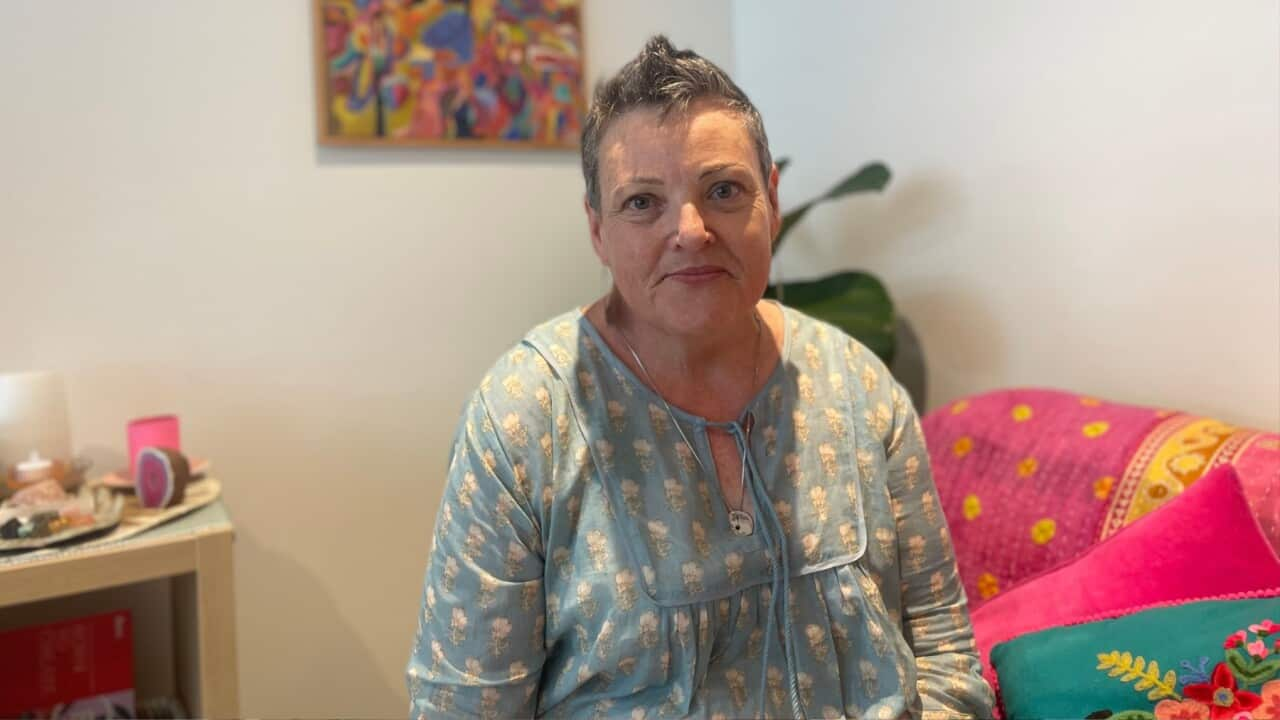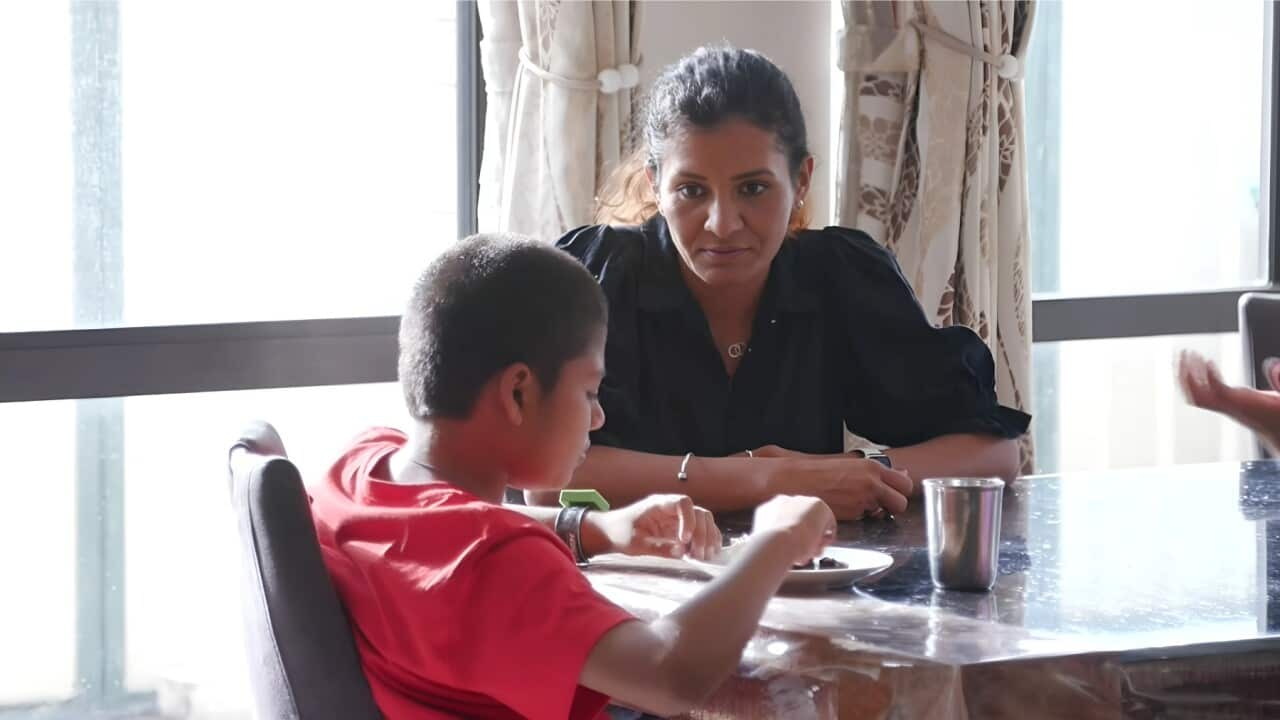TRANSCRIPT
A spinal exam is underway at a clinic south of Sydney. On the table, 38-year-old Kylie Stewart who suffers severe lower back pain.
“I have two bulging discs, I believe in my C four and five. It's pretty debilitating. So I can't play sport. I've pretty much given up. I used to run a lot. I can't do that anymore, obviously. I miss being able to run and feel good about myself. I just feel old and incapable and upset - really, really upset.”
The mental health nurse works fulltime in Sydney and is the mother of a teenage son. While still able to drive, she says even sitting behind the wheel is a challenge.
“It's like a pressure in the lower part of my back, like the lumbar spine. It's a constant pressure and I know I'm already pre-empting how I'm going to feel when I stand up. You cringe constantly because you know what's going to happen.”
Ms Stewart believes that during recovery from knee surgery, she injured several discs during a light workout at the gym.
“The next day I woke up and I literally couldn't move. It was excruciating pain and my right hip was higher than my left and I just couldn't put my back straight and I was in so much pain.”
That was several years ago – since then severe pain has been her constant companion. Experts have offered powerful painkillers or fusion surgery. Ms Stewart says neither treatment appeals.
“It's sad like I just feel like I don't have my life under control at the moment. I just feel like there's no hope. I always imagine if I feel like this now, how am I going to feel in 10, 20, 30 years’ time? How much worse is it going to get if I don't get it fixed?”
However, human trials are set to begin next January of a promising technique designed to rehabilitate spinal discs. Ms Stewart is among dozens of patients on the waiting list. Orthopaedic spine surgeon Dr Ashish Diwan explains:
“This trial is focused on trying to cure that intervertebral disc injury by healing it. We inject a recombinant protein which can mobilize the stem cells, which are just there, sitting there in the bone above and below into the disc. And when they arrive at the disc, they actually become disc-like cells and they make new disc and they heal the disc. We will start off with a small group of about 20, then we will increase it to 80 and then we will get it to the next phase where 250 to 300 people will participate. Australia is leading the world in this.”
The trial has government support and financial backing from a venture capital firm specialising in biotech, based on the NSW Southern Highlands. Dr. Diwan is one of the fund’s founders and is excited by the trial’s potential.
“First, we should see pain relief. We have evidence that it does cause pain relief, which we should see in weeks. Then the second phase would be we start seeing evidence of disc repair. That'll take about three months to six months. If we can save at least 50 per cent of them from heading towards the spinal fusion, I would think we have attained a big success.”
Dr Diwan says any commercial release may still be five years away. However, these first human trials follow four years of rigorous testing on animals.
“In all circumstances where there's a mechanical compression injury or there is a direct injury, we showed that it heals. If there was pain that got modified too.”
Around four million Australians live with back problems, and disc degeneration is a common factor. Manuela Ferreira is Professor of musculoskeletal Health at The University of Sydney and says a recent report found that - worldwide – it’s a growing problem.
“Low back pain has been considered the main cause of disability in the world since 1990. We estimate that around 623 million people suffer from low back pain around the world. And by 2050 we expect 850 million people with back pain around the world, which is again a very large number. For the first time we could actually identify that the peak prevalence is around 80 to 85 years of age.”
While disc deterioration due to age is a factor, Professor Ferreira says there are other risks too:
“Occupational factors – so this is work that involves vibration that involves long standing, that involves long sitting, for example driving, lifting, carrying so all of that smoking as well as high BMI.”
Dr Nashwa Najib is a spine researcher completing a PHD with Dr Diwan and says this new project may have broader impacts on those living with a chronic condition.
“Back pain really affects an entire spectrum of the human life, not just their physical health. It affects their psychological wellbeing, it affects their financial health and as well as interpersonal relationships. I'm pretty positive that this impact is going to be massive, not just for the patients improving their spinal health overall, but also for the practicing clinicians. It just gives them that extra edge.”
Dr Diwan has devoted 25 years to spinal surgery. However, he hopes these trials will offer a viable alternative to spinal fusion.
“It'll be very disruptive. It'll be very gratifying. It'll change the productivity of nations, it'll improve people's mental health. We will be walking more, we'll be running more, we'll be taking less pain medication. We'll be enjoying family time more.”
For spinal patient Kylie Stewart, the goal is getting back to what she loves!
“I literally just can't wait to run again. I told myself I would never do a half marathon again. But if I could run, I would absolutely do another one - just because I can.”













